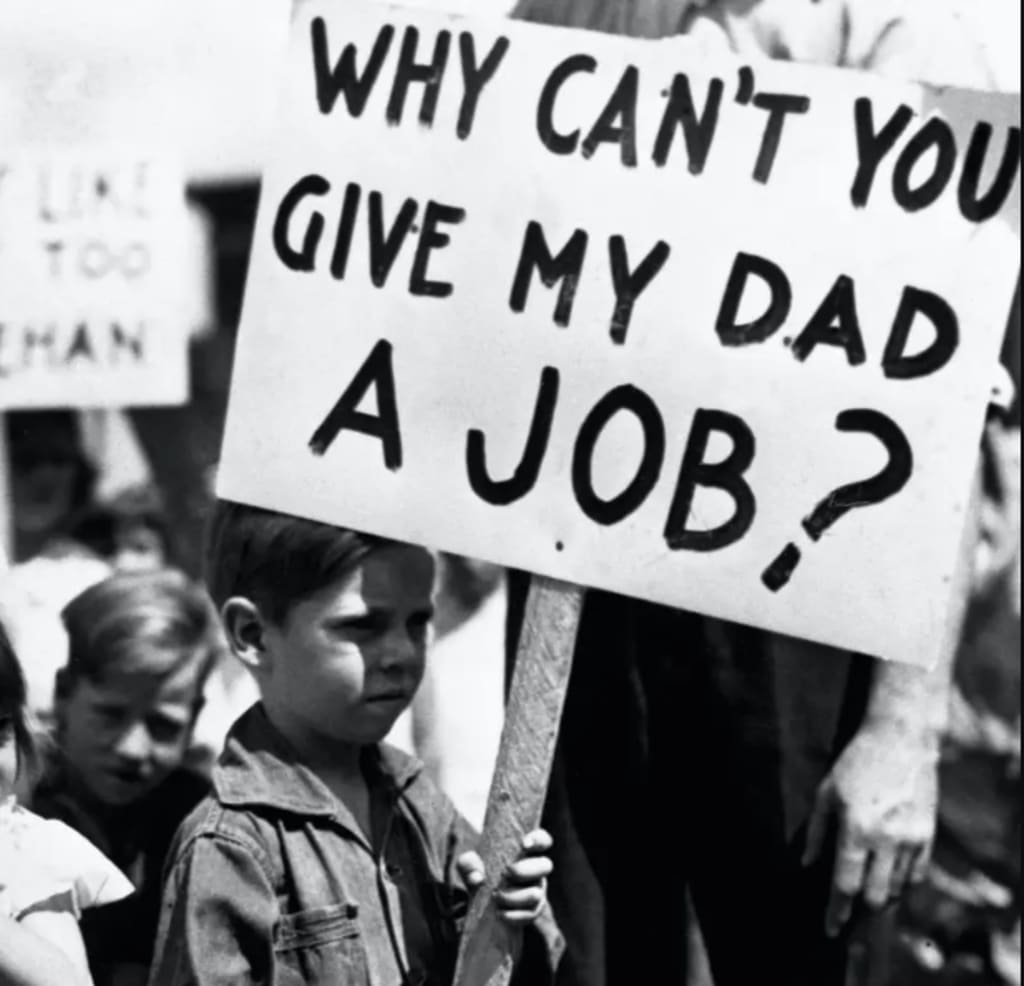The great depression
the greates economy crash

The Great Depression was one of the most challenging and devastating periods in the history of the United States of America. Starting in 1929 and lasting for over a decade, it was a period of massive economic decline, widespread unemployment, and poverty that affected millions of Americans.
Causes of the Great Depression
Several factors contributed to the Great Depression. One of the primary causes was speculation in the stock market. During the 1920s, many investors, including banks, borrowed large sums of money to buy stocks, hoping to make a quick profit. However, many of these companies did not make a profit or went bankrupt, leading to massive losses, and banks were left with significant debts they were unable to payback.
Another factor that contributed to the Great Depression was the overproduction of goods. During the 1920s, companies were producing goods at an unprecedented rate, but the demand did not grow as fast as production, leaving a surplus of goods. The excess products led to a decrease in prices, which significantly impacted the companies’ profits, leading to many businesses shutting down or laying off massive numbers of employees.
The Dust Bowl, a severe ecological disaster caused by a combination of drought, overfarming, and poor farming practices, also contributed to the Great Depression. This disaster led to the destruction of fertile land in the central and southern plains, leading to a massive decrease in farming output.
Effects of the Great Depression
The Great Depression had a significant impact on America’s economy, social, and political systems. By 1932, over thirteen million Americans were unemployed, and tens of thousands were homeless. The unemployment rate was at an all-time high of over twenty-five percent. This led to a significant decrease in consumption and production of goods, leading to more layoffs and bankruptcies.
The depression also affected the nation’s social and political landscape. Millions of Americans struggled to feed and care for their families, leading to a surge in homelessness and hunger. Many young people postponed marriage, and birth rates declined dramatically. Crime rates went up as people struggled to survive and turned to illegal means to get by. The country’s political system was not spared either, as many Americans lost faith in their government’s ability to solve the crisis.
Government and other attempts to combat the Great Depression
The Great Depression was a global crisis that affected many countries, including the United States. In response, the government implemented various solutions to mitigate the economic impact of the crisis. One of the implemented solutions was the New Deal policy, launched by President Franklin D. Roosevelt.
The New Deal was a set of policies that aimed to stimulate the economy and provide relief to those most affected by the depression. It included programs such as the Social Security Act, which instituted a federal pension system, and the Civilian Conservation Corps, which hired thousands of people to work in public works projects.
Besides the New Deal program, other programs were implemented to stimulate economic growth, such as the National Recovery Administration, which aimed to bring together various industries to agree on fair prices and reduce competition. The Federal Deposit Insurance Corporation was also created to protect people’s savings from future bank failures.
Effects of the Great Depression beyond the 1930s
The effects of the Great Depression lasted for years beyond the 1930s. The long-term effects of the depression led to significant social and economic changes that shaped modern America in various ways.
One of the significant effects of the depression was a shift in people’s attitudes towards economic policies. Prior to the Great Depression, many Americans held to the belief that the government should not interfere in the economy. However, the government’s intervention via policies like the New Deal demonstrated that the government can play a vital role in creating an economic safety net and alleviating economic hardships.
The Great Depression also caused people to reassess their economic choices, leading to changes in their saving and spending habits. Many people began saving more and borrowing less, leading to more stable and secure financial lifestyles.
Finally, the Great Depression led to significant changes in the financial system. Bank failures during the depression resulted in the creation of the Federal Deposit Insurance Corporation, which guaranteed deposits up to a certain amount. This led to an increase in people’s confidence in the banking system and contributed to stable economic growth over the years to follow.
The Great Depression taught the world some harsh lessons on the importance of responsible financial management and the consequence of unstable economies. It also highlighted the importance of government intervention to stabilize the market during challenging times.
In conclusion, the Great Depression was an unprecedented crisis that affected millions of Americans. Its effects are still felt to this day, and the lessons learnt during that time have shaped the country in various ways.
About the Creator
Rehan junaid
i am a student who likes to write and i am earning money to build a pc and write even more





Comments
There are no comments for this story
Be the first to respond and start the conversation.